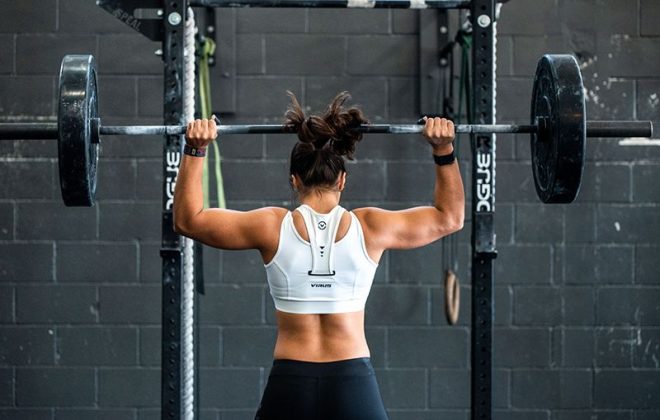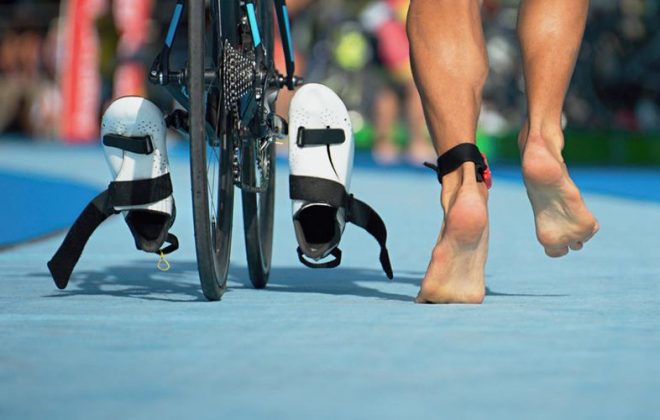9 Tested Ways How To Exercise At Home And Get Better Results
How to exercise during lockdown? What are the best bodyweight CrossFit workouts? How to substitute cardio exercises at home? These and hundreds of other thoughts run through the mind of every athlete who is committed to a certain fitness goal and is forced to exercise at home.
The global pandemic of 2020 has disrupted a lot of everyday activities. Some people were forced to stay indoors for an extended period of time as a result of restrictions. Others had to adjust to the ‘working from home’ movement. At the end of the day, everyone had to deal with some degree of change and look for ways to adjust their lifestyle – especially athletes.
Majority of us train outdoors on a daily basis and lockdowns of 2020 were challenging, to say the least. In fact, professional Iron-distance triathlete David McNamee shared his experience of trying to squeeze a 30+ hour training week indoors, as Girona went into a full lockdown for 45 days. Spoiler alert – it’s hilarious.
While in many corners of the world people could at least leave the house, maintaining the regular training routine was no longer possible. Gyms and pools were closed. Gatherings and group sessions were restricted. Races were cancelled.
So, how can competitive athletes exercise at home – be it during lockdown or while self-isolating?
Exercise at home while self-isolating
While I personally had the privilege of being able to get outside during the global 2020 lockdown saga, the Covid-19 pandemic caught up to me as well. After being tested positive for the coronavirus, I was forced to stay 10 days in home quarantine with that privilege taken away.
Being creative about how to exercise while self-isolating made me reflect on what other athletes have gone through before me – with lockdowns and restrictions. Here’s a video I filmed about that experience:
Global pandemic aside, there are plenty of other reasons that could disrupt the exercise routine. To name just a few examples:
- Weather (rain, ice on the ground, snow, hail, cold)
- Limited opportunity to exercise outside (i.e. living in a densely populated area or with poor infrastructure)
- No training ground, gym or specific equipment nearby
- Traveling
- And many more reasons…
Home workout ideas to try when stuck inside
Much like you can stay fit while traveling, there are plenty of ways how an athlete can exercise at home and improve his or her performance. After all, the most important factor in improving fitness is the increase in training volume, intensity and variety. And that can be manipulated in many different ways.
They say gold medals are earned in the off-season. And that’s because that far out from a race day athletes have the opportunity to put in the work to improve muscle strength and make a meaningful shift in their performance. Otherwise, the fatigue that results from strength training would interfere with speed and endurance training.
Scroll down for 10 ways how to improve the quality of your home workouts.
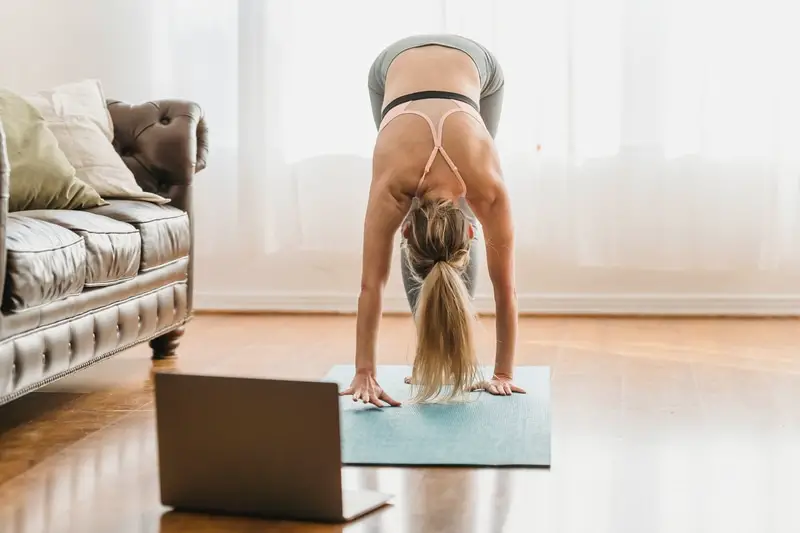
#1 Basic home workout with own bodyweight
If you’re stuck at home, a base strength session is a universal way to stay fit and exercise during lockdown. It’s also a great way for the athletes to balance endurance training and avoid peaking too soon when racing season resumes. That is, building a lot of endurance capacity and not enough power to maintain performance gains.
Below is an example of a full body workout at home. It’s just a template and you can create your own home gym workout routine by swapping exercises that target specific areas (i.e. chest, legs, back, shoulders). Do 10-20 repetitions of each exercise and don’t take any breaks in between. Try to avoid reaching complete muscle failure and instead, try to finish each exercise feeling you could have done at least 20% more.
- Lunges or air squats
- Glute bridges
- Calf raises
- Push-ups
- Pullups or Resistance band rows
- One-legged heel touch
- Resistance band triceps extensions
- Resistance band shoulder lateral raises
- Core rollout or V-Ups
- Side leg raises
Use your own bodyweight to target as many muscle groups as possible. Perform exercises slower to increase the load (or use stronger resistance bands) or increase the speed of execution to get a great HIIT workout at home. In fact, if you do it at a very fast tempo, it will make up for a great bodyweight CrossFit workout.
Subscribe to my list to get a free 4-week ‘back in shape’ program + a full-body workout you can do anywhere (join here).
Read also: 12 Effective Strength Building Workouts For Any Experience Level
#2 Follow a Yoga or Pilates flow
A session of Yoga or Pilates is another great home workout idea and a way of building basic strength. Either of these practices rely on static exercises and controlled slow movements to engage a lot of supportive muscles across the entire body. That, in turn, helps to improve body control, align any muscle imbalance, improve posture, reduce injury risk and even improve form.
Yoga and Pilates essentially integrate such core exercises like planks, bird dogs, dead bugs, rotations and many more into a single routine that is easy to follow. So, simply turn on YouTube and follow one of the flows. My personal favourite is the sun salutation sequence that I enjoy doing in the morning.
#3 Improve mobility and movement quality
In its essence mobility is the body’s ability to move the joint through its full range of motion without restrictions or pain. More often than not such common issues like knee and lower back pain can be attributed to tightness and/or weakness of certain muscles. Moreover, mobile joints lead to more powerful and efficient movements, as well as improved blood flow that helps them recover faster.
As little as 10-15 minutes of gentle foam rolling and exercises that take the joints through the full range of motion (i.e. circles, swings, twists) can remove muscle tightness and increase their capacity to perform. Once tightness is relieved, athletes can imitate their sport-specific movements to improve kinaesthetic awareness and conditioning. A swim trainer is a good example of that. Over hundreds and thousands of such repetitions the movement will become more effective as athletes learn to apply power better.
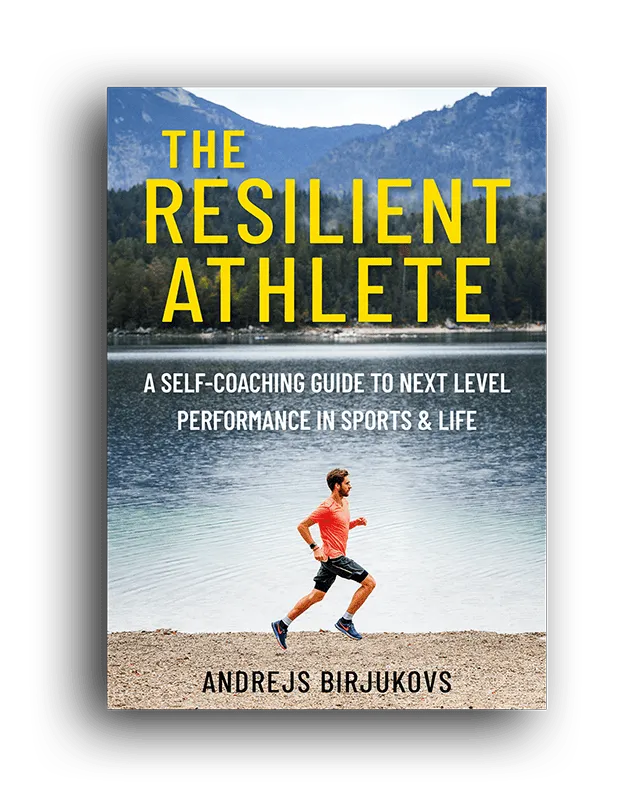
The Resilient Athlete
A Self-Coaching Guide to Next Level Performance in Sports & Life
Are you aiming to become a resilient athlete who is able to withstand any pressure? Be able to jump on any opportunity? Take any challenge life throws at you head on?
Then this book is for you.
Learn more#4 Strengthen core
Many would imagine lower abs or six-pack when thinking about core muscles, but it’s much more than that. Our core is involved in everything we do (hence the name) and acts like a central hub that holds the rest of the body together. Strong core distributes the load most effectively across the body – to those muscle groups that are designed best for the purpose. It also ensures no muscle or joint is tight or unable to operate, essentially keeping the body balanced and in sync.
If you plan to exercise at home, a very effective use of your time would be to do a few core circuits. These consist of 4-8 core exercises performed with no breaks in between and can take as little as 1-2 minutes to complete. While it sounds easy, the body is under constant tension and even that little time is enough to ‘feel the burn’. Nonetheless, such sessions don’t add much overall fatigue and athletes can repeat it every few days. Unless you’re making these core training mistakes.
#5 Build endurance with indoor cycling (or any other cardio activity)
If you have a stationary trainer (i.e. treadmill, rower, indoor bike), you can do your cardio exercises at home. It might be less exciting than training outdoors (because of lack of scenery), but it can be more efficient. You can complete more structured intervals indoors. Use the time to watch documentaries or listen to podcasts. Or even spend quality time with the family. It’s also a great time saver if you want to train for an Ironman on a limited time budget.
Read also: Minimalist Ironman Training Program & Tips For Busy Triathletes
Keep in mind, though, that when exercising indoors you tend to perform 10% – 20% more workload. That happens because of lack of fresh air and wind that can cool the body off, as well as less interruptions that act as mini-recoveries (i.e. stopping at traffic lights or coasting on descents).
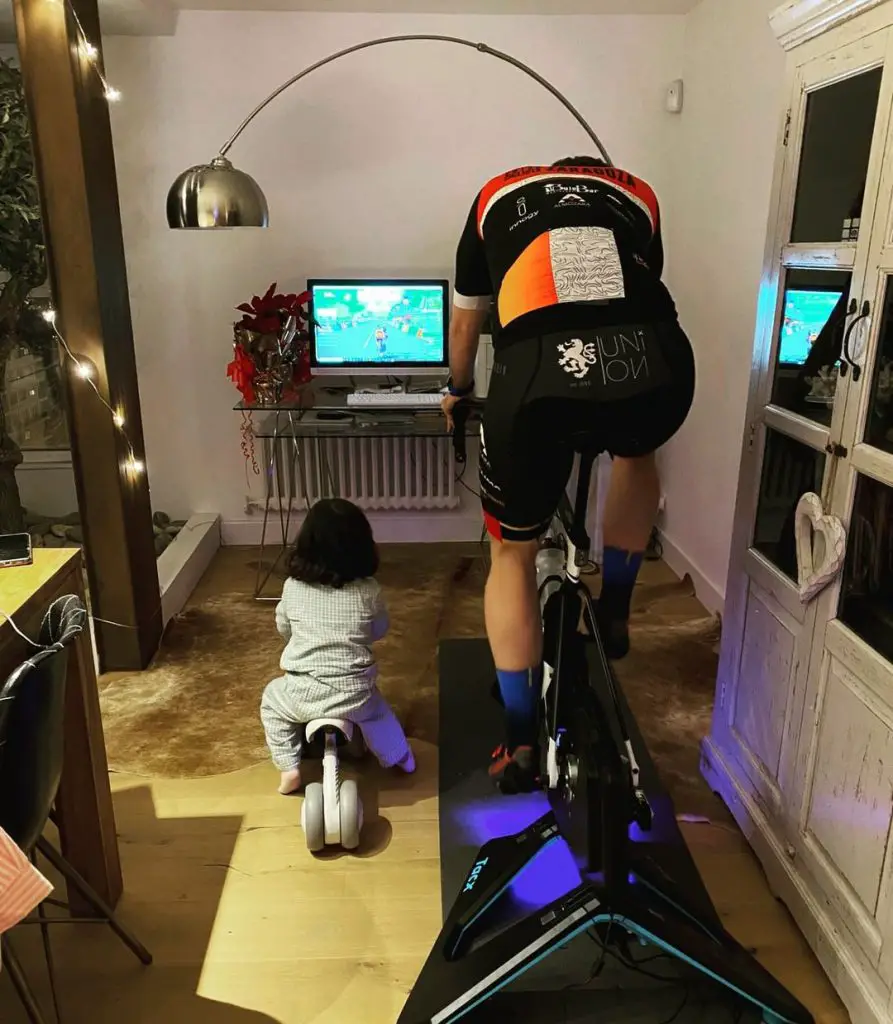
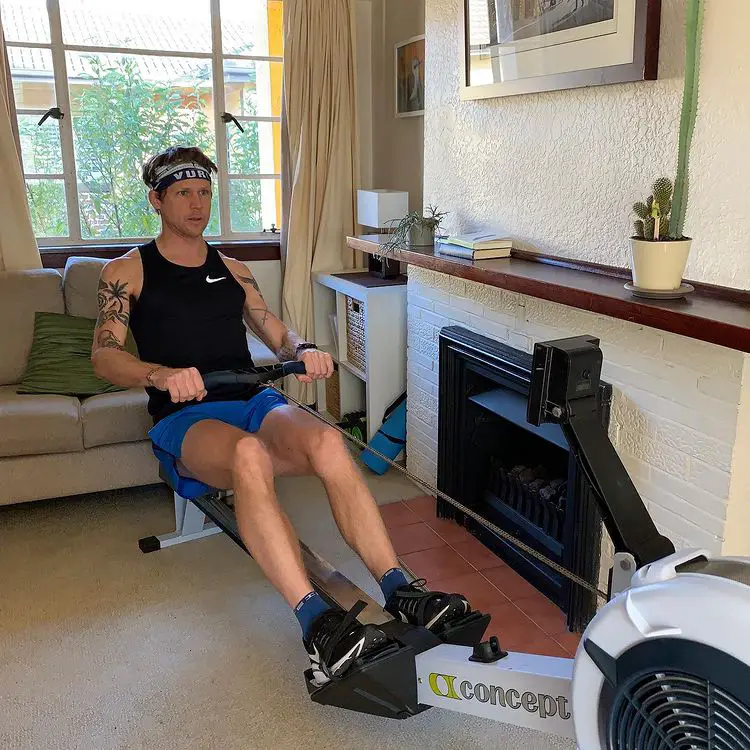
#6 Do-it-all using skipping rope
Skipping rope is the most versatile training tool to exercise at home. It can be considered an advanced form of cardio exercise, because besides elevating the heart rate it also contains an explosive element that builds power and conditions the body. Moreover, when we jump we move our entire body, thereby engaging all muscle groups – lower body (i.e. calves, thighs, glutes) to perform the jumps, upper body (i.e. forearms, deltoids) for moving the rope and core to stabilize the body.
5 minutes of skipping rope can wake you up better than a cup of coffee.
For runners in particular skipping rope is one of the best leg exercises – at home or elsewhere. It essentially simulates the process of running and over the course of thousands of jumps adapts muscles, joints and ligaments to the demands of it.
Vary the jumps you perform (i.e. on one leg, while moving) to get the best effect or pair it up with a core circuit to get a very effective HIIT workout at home.
#7 Plyometrics
Athletes who have a good base fitness might consider adding plyometrics to their training to make the time spent at home more exciting (and fun). A plyometric session includes fast and powerful movements repeated in quick succession with a goal to trigger neuromuscular adaptations in the body. These, in turn, result in greater efficiency and muscular endurance.
The key to such session is explosiveness. In other words, to exert maximum force in short intervals of time. A typical session can include different types of movements – like pushing, pulling, throwing, jumping or running – as long as they are performed explosively. Doing so teaches the muscles how to work together efficiently.
The movements are very taxing, which is why the amount of exercises and repetitions should be low to allow the body to produce maximum force. For example, 5-8 clap push-ups or 20 seconds worth of squat jumps.
#8 Use unstable surface to improve balance & coordination
Another way for athletes to advance their basic home workout further is to use unstable surfaces to make the exercise more complex. This will require slower execution (resulting in higher workload), as well as will force the body to engage stabilizing muscles more.
If you have a suspension trainer at home, you can design a home gym workout routine and include more advanced push and pull exercises that would make your workout even more effective. In fact, if you design it right, you can make target any effect with your exercise at home. Be it HIIT / cardio workout with fast repetitions or muscle building session with very slow repetition ones.
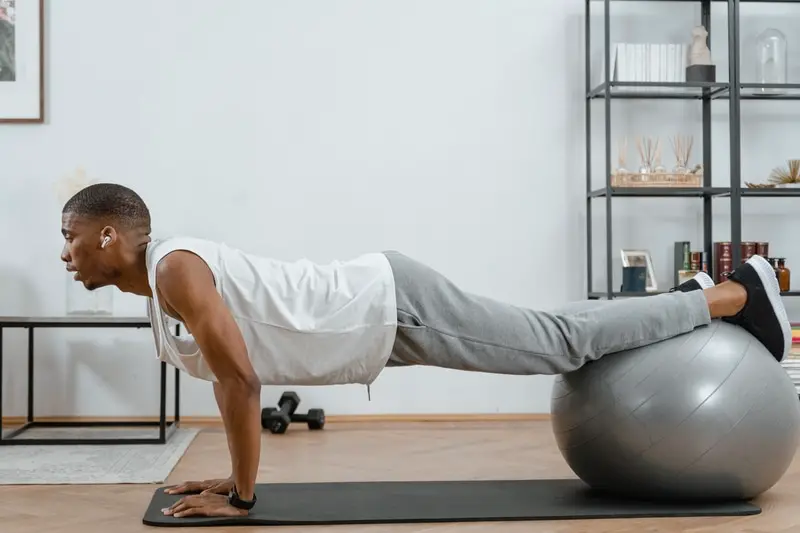
#9 Focus on recovery activities
Finally, even though this is not technically a home workout, spend some time on recovery. Use the time you intended to exercise at home for self massage instead. Or spend 10 minutes on an acupressure mat. Do a stretch session. Meditate.
As athletes we’re very competitive and put a lot of effort on training. But sometimes all the body really needs is just a little space to relax and recover.
Have an opinion? Share via links below and tag @theathleteblog
Tags In
Andrejs Birjukovs
GET A FREE TRAINING PLAN
Subscribe to my email list and get access to a free 4-week “back in shape” training plan
You’ll also get two full-body strength sessions and some other goodies!
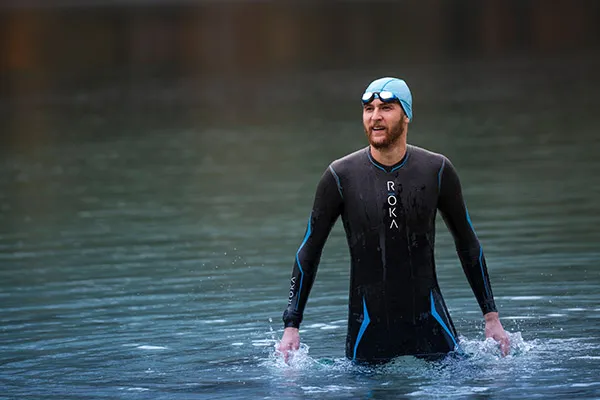
How did I get here?
Hey there! My name is Andrejs and I am here to inspire, entertain and get you fit for any adventure.
I went from being an over trained pro athlete to an endurance coach sharing how to listen to your body and live life to the fullest.
Traveling, new sports & activities brought new meaning to my training and made it much more effective, fun and enjoyable. And I'm here to help you do the same.

